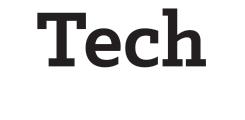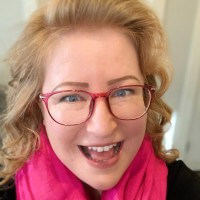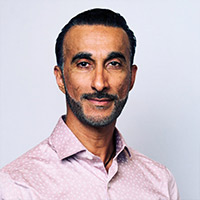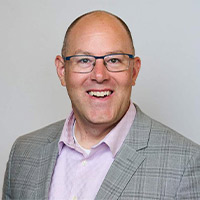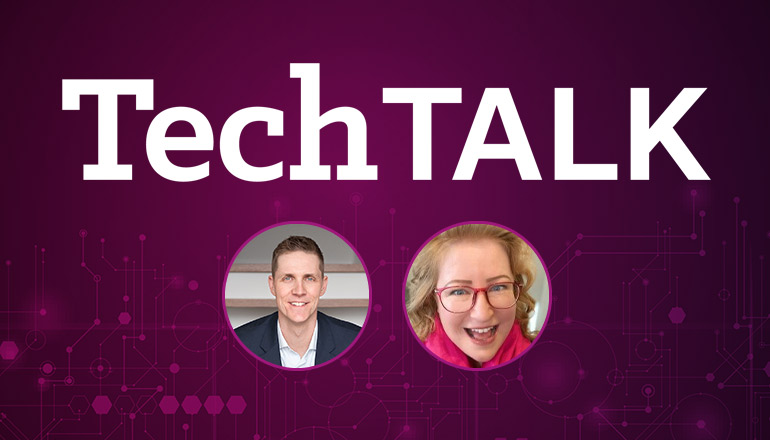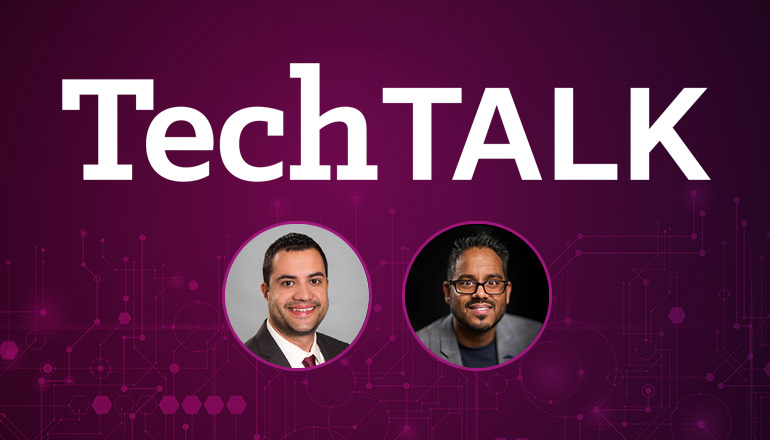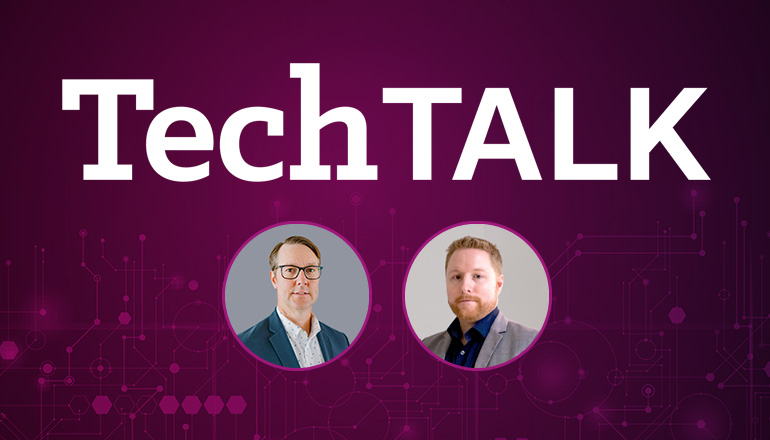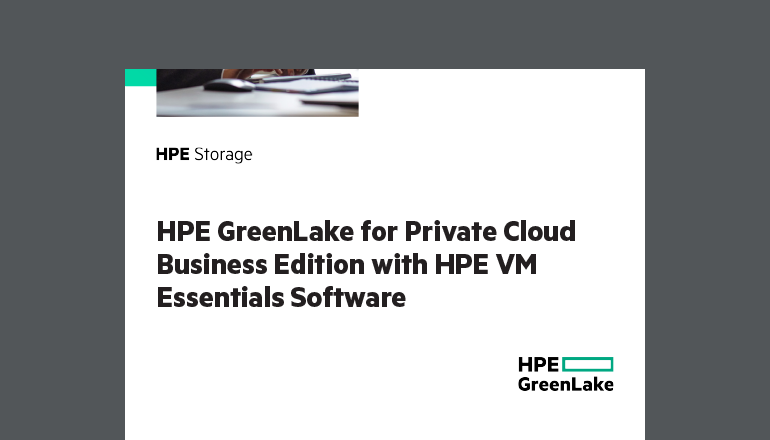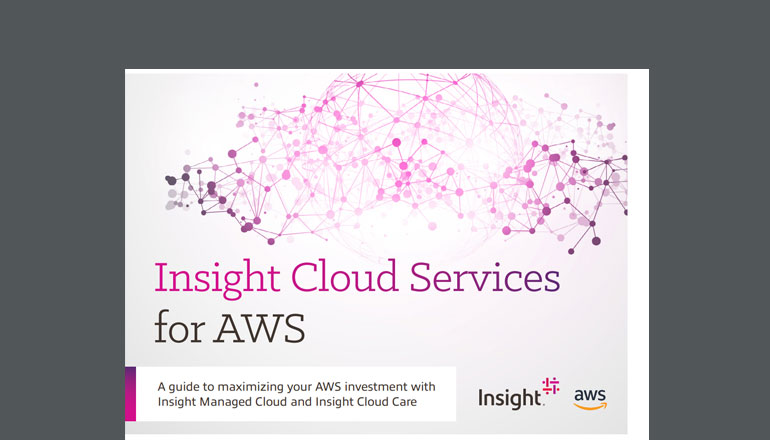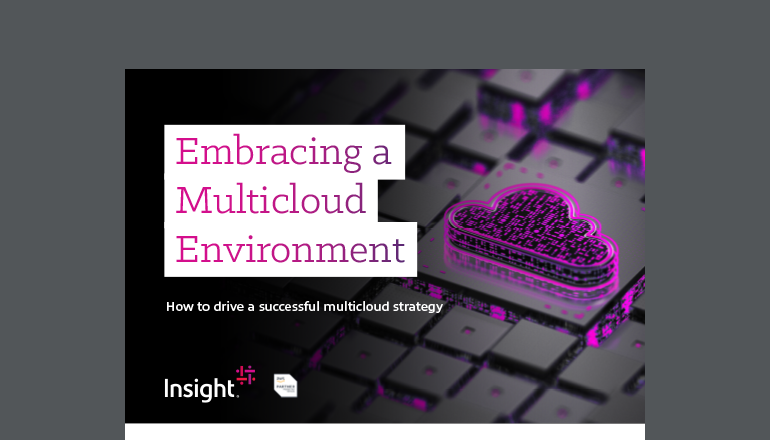Transcript of audio:
TechTalk | Insight and AWS: Making Sense of the Changing VM Landscape
[ERIN]
Hello, and thank you for joining us today on this episode of Insight's "Tech Talk." My name is Erin Hazen, client solutions executive here at Insight, and I'm thrilled to be joined today by Ravin Premji, AWS Solutions architect, and Neil Smith, manager of Technical Solutions Infrastructure. I'm really looking forward to this conversation with you both. Thank you so much for being here.
[NEIL]
Thank you so much, Erin.
[RAVIN]
Thank you. Thanks, Erin.
[ERIN]
Today we're going to be talking about the recent announcements around VMware and its acquisition by Broadcom, and how Insight, with our expertise and collective experience in data centric and cloud operations is helping our customers make decisions that mitigate disruption to their businesses and optimize cost, all while supporting their transition to a new VM reality. I know that this is a hot topic right now, at the moment. Should we dive in?
[NEIL]
Please.
[RAVIN]
Yes.
[ERIN]
Perfect. Perfect. So Neil, let's start with you. If I can start by asking you to talk a little bit about where we are at currently and the changes that we've been seeing with the recent acquisition of VMware by Broadcom.
[NEIL]
Absolutely. So VMware used to have sort of an a la carte type licensing model, which has now pivoted, once with the Broadcom acquisition, to more of a bundled type model, which is now, and fully subscription based, which changes the financial perspective of how our customers consume VMware. The technology's still the same, but now it's bundled differently and the customers need to be able to approach these conversations and how their environments look on this basis.
[RAVIN]
Yeah, absolutely, Neil, you're correct. And what we are learning, just out of this exposure, changes in the climate of how VMware is being utilized by the customers is, you know, it's a different model, right? What's happened is the actual, the way VMware licensing is being packaged is different. You know the other parts of it we normally see is like, well, how do we, you know, understand to run VMware in a different environment? Sorry, VMware based applications run in a different environment. What's the actual cost of adoption going to look like? You know, what is it suitability in the cloud? And so as a cloud architect specializing around AWS, I find myself, you know, working with customers to understand what that transition may look like. So that's some of the challenges we are seeing, and I think as we go on through today's session, we'll probably uncover more of that. Yeah, absolutely.
[ERIN]
Perfect. Perfect. So, maybe let's talk a little bit about why customers might be considering this alternate means of hosting their applications. And I have to say, I love that Insight has been so mindful of this. This is a big undertaking for a lot of our clients and customers. And so, the fact that you guys have been proactively ahead of it and presenting these solutions is so valuable. What I'd like to understand, like I said, a little bit more, is why customers are considering an alternate means to this.
[NEIL]
With a change of licensing model, and when it comes more as a bundle type suite, now you've got to take into consideration the different types of software and how you'd be using them with the different types of hardware. So there's weighs and costs that can affect customers based on, maybe their existing hardware is different than what future hardware, and ways to optimize those type of work holds.
[RAVIN]
Yeah, absolutely. You know, and the other thing is, right, like, so we're introducing, you know, you've got customers who are used to, inherently over a long period of time and historically have built up that skillset to manage that VMware state, right? So what's happening now is that, you know, all of a sudden you've got this cost, a big change. The way it's packaged, the cost of VMware, you know, in terms of ownership is that landscape has changed. Some of the customers are going to absorb that cost, right? Just because they've built so much skillset around it and managing and sustaining the environment. However, some customers, what you'll find is that the cost is too much to bear. And you know, this could be like nonprofit organizations, some government institutes, some smaller businesses, right? So, we've got this environment where we're used to managing, now, like how do we actually move to a different platform, different platform engineering, in fact, like a cloud provider, how do we actually support that? We're actually starting to introduce some challenges around their own, you know, complexity. I don't know this environment operations, how do I actually manage day to day? What's the patchware, what's the, you know, sustainability look like for that application suitability? Is my application going to run the way it ran over here, but now it's running the cloud? Is it going to perform the right way, right? So things like that. Some applications going to be legacy. They may be already going through an exercise where, you know what, we've got one or two data centers, we want to reduce that sort of cost of ownership. I want to reduce that DC footprint.
So these are some of the, you know, whys of, you know, we want to consider, you know, looking at your current VMware state and seeing where and what that looks like. But the other thing is, one thing I've noticed is that there's some external factors coming into it. Obviously, the competition from VMware, some of the other major vendors, and they're looking at this as an opportunity, that's all great. But I think one of the things that as we go into the next couple of minutes, you'll start to understand, it's not just a case of just taking all the applications running on VMware today and just moving it to another platform. You know, you have to, all the things you mentioned before, complexity, operations, et cetera, cost, right? This is a learning process. So, we want to make sure that, you know, we can help our customers understand the why.
[ERIN]
Perfect. And actually, this leads me perfectly into the next question, Ravin, and maybe even just a sentiment, given that I've had the experience of working through this with some of my clients, and this industry shift, and tell me what you guys think about this, but this industry shift has really given organizations a strong reason to take a closer look into their data estate because maybe some of them haven't really been paying too much attention and now they're being forced to really evaluate. But that can be overwhelming, which is why we're here to provide that guidance. And so, can you tell me a little bit more, maybe Ravin, we'll start with you this time, a little bit more about what is important for customers to consider when they're evaluating their VM options?
[RAVIN]
Absolutely. So, you know, the what is like now, so here's the thing. Our customers know the applications best, right? We are walking into the front door, we are being exposed to a whole bunch of plethora of varying applications, right? So you guys know your applications best. We have the art and the experience of understanding and questioning, you know, what is the requirements of application dependencies. You know, perhaps there are certain tie-ins with other applications that maybe there may be some third party API gateways that attach attached to it, right? So things like that. But the thing is that the what is, you know, we look at understanding that application the way it is today and then trying to help, you know, dissect that. Like, you know, what's legacy that, you know what, we can move our VMware platform. It's got some life still remaining there that the customer needs to support 'cause it's part of the operations. Some may be that we need to help with modernizing, right? So when we talk about modernization of applications, it's a very wide topic, and we're talking about like, you know, something simple as taking an application, basically pulling it apart and then putting it into the cloud, where native services can best support it, right? And then the other part of it's database, we know the heart of every application's database, that's where your data sits. There's ways to support that in the cloud. There is platform as a service and things like that. So, we are getting into that, you know, some cloud providers call it the 7R, some call it 5R. It's like, you know, do we like refactor, replace, you know, rehost like some of the questions we ask ourselves. So that's where we come in to help. And I think I want to give some time here, Neil, he's got some great thoughts around this too. Neil, feel free please.
[NEIL]
Thank you so much, Ravin. And you're absolutely right, to compliment that, like when we come to a customer, we take it with a consultative approach. And so we work with the customers to sort of understand what that ecosystem looks like in the application space. And you're right, the customers know their applications the best, but where we come in, and we have a good understanding of what that IT infrastructure looks like underneath to support it, we can help build those dependencies and right fit them for the appropriate landscape where they should be, what makes sense for the business. Does it make sense staying it on-prem, in say maybe a VMware type model, or does it go better in the cloud in say, a containerized model? And so, we are happy to work through those conversations.
[ERIN]
I love it. And, gentlemen, I firsthand, as I mentioned before, working through this with a couple of my own clients, the sort of stress level of how they've been feeling about all of these, you know, pending changes. It just really starts to come down when we get on the phone together and we can say, hey, like, we hear you, you've got options and we can walk you through what these look like. So, I love that that consult state of approach from Insight really establishes that thought leadership and trust between us and we can really, you know, guide clients to the best outcome possible. So, maybe we can get a little bit more tactical here, as I know viewers will probably want to get into a little bit of the how of it all, right? How does Insight determine what fit and formula is ideal for each customer?
[NEIL]
There's no one good formula, and I'll just jump on this super quick Ravin, to compliment Erin's thought there, like this is, you mentioned that customers are coming in with concerns around, say, VMware, the changes, the disruptions happening in the marketplace. But from an Insight perspective, this is business as usual. And so, whether it's disruption due to licensings around VMware, or whether it's modernized tech applications, new cloud platforms, whatever it might be, we take these things into consideration and work with the customers to bring that modern approach. And so, we work with them to understand those workloads, some of those starting with an assessment-type approach where we may assess from a technical or workshop perspective to see what those applications and build out those groups, and then we can start building what we call like, application work groups that can go into the cloud. So populate our migration factory at the end of the day. So Ravin, please continue.
[RAVIN]
Yeah, I want to build on what the key word Neil mentioned was assessment, right? 'Cause assessment is allows us the opportunity, earlier I mentioned about we don't know your environment, we don't know all the ties and networking glue that is makes your applications function and provide your end user and your customers, you know, access and operability. But, when we talk about assessment in the cloud world, I'm a, you know, cloud architect now for more than, almost coming up to a decade, So I feel very privileged to be in this position where I can share my experience. So the thing that I'll have to express my, you know, some areas of expertise here, is assessment and how we do assessment in your environment. So the best way to do this, depending if it's a small environment, or medium large, but anything that's kind of medium, small, medium, to large, we may want to go down the path of a data-driven analysis, So data-driven analysis is, when we talk about that in the AWS world, we call it OLA, as in O-L-A, stands for Optimization and Licensing Assessment. So what this does is this allows us to give a good look inside you environment, the heartbeat, the glue, the heat map of your applications, how they work, how they talk to each other, the dependencies, right? The size. And that's really important because we covered this one topic called optimization, right? You're running this kind of cluster of applications on-prem.
We want to move some of this to the cloud. AWS has a very good engine to actually come in and help you analyze this, right? Most cloud providers do that, but in respect to OLA, we talk about what's the sizing we need to move it to the cloud? What's that migration path look like? Licensing, right? Let's talk about licensing. Windows licensing, Linux licensing. All these are very, very key part of the cost of ownership. How do we optimize that, right? Buy the right size licensing to fit that load, right? That's it. So when we talk more about the assessment part of it, one of the things that I like to do, and this is where I've got quite a bit of experience, and I've helped a lot of customers, once we get a data-driven analysis, I work with, you know, the organization, the company, and the architects internally with our clients, and understand what's top of mind and let's focus on that, right? It's not about lift and shift everything in one go, it's about just taking care of what is needed today, right? And it's something that I'll touch base on a little bit later on, but that's around agility, or the agile approach. But one of the things that we want to do is focus on that assessment and what the, you know, end state maybe is that, you know, some applications get moved as is, some gets refactored, right? Like for example, if you have a file sharing service, you may go to a AWS native service that's offered today, you know, in respect to other ways of running applications.
Here's the thing, we talked about containerization historically for a while within our organization. People don't maybe not consider that, because it's the skillset needed, right? So ROSA, which is a Red Hat OpenShift on AWS, is a very good platform to actually maybe consider, hey, some applications fit here, right? Guess what? Containerization, it gives you resiliency, low cost, ease of app orchestration, straight out of the box, right? So these, we have tools that will actually help assess that, right? And then finally, actually, I want to give some time back to Neil, just talk about, you know, a little bit of your team that's been supporting me actually around, for example, backups and Veeam and you know, some of the other providers we work with.
[NEIL]
No, absolutely. And so that's one thing to take into consideration, we always bring to the table is data protection. No matter where your data is being held, whether it be in the cloud or an on-prem type environment, you need something protecting it at the end of the day. So, understanding what those RPOs, RTOs are, retention type policies, you need a DR type approach to data protection or business continuity. These are all things we like to take into consideration when working with you and your teams.
[ERIN]
Perfect, perfect. So, and I really appreciate all of that information and feedback. It's so valuable, because this is complicated. This is a complicated thing to talk through with customers, and each answer is not always going to be the same. So maybe, what we could talk about next as we kind of come to the conclusion of our conversation here, is those outcomes. What can we expect for clients as far as outcomes?
[RAVIN]
Absolutely. I know we just want to make sure we're cognizant of our time when it finishes in time. So, my main thing I want to talk about is like, you know, I mentioned Agile, right? Like I said, not all applications will be a lift and shift across, some will be migrate across as is. Some will be, you know, sitting as a refactored, some might go to a SaaS type offering, whatever the outcome is, we have expertise experience through collectively working with a lot of clients, can bring this to the table. So help you understand what that platform journey looks like, and also the training enablement so that when we hand the keys over to the new shiny vehicle, you can operate it.
[NEIL]
Yeah. This isn't a one size fits all approach. There's going to be a hybrid type environment, whether how much on-prem to how much in the cloud, and what that spectrum looks like in between will help our customers land on exactly the right size fit for their organization.
[ERIN]
Perfect. I really love this. I feel like, okay, we know where we've come from, we know where we need to go, we know the assessments that need to happen to make sure that the clients and our customers have what they need. And we have delivered these outcomes now, time and time again, lots of experience throughout this. So, I feel like that's very reassuring for everyone listening that this is a very manageable project that they may want to undertake. Just to close out guys, thanks so much for your time today, Ravin and Neil, it is a sincere pleasure to speak with you both and we appreciate your time and expertise. Thank you for sharing how Insight can help customers understand the various possibilities for re-hosting their applications and how Insight already possesses the technical know-how and business relationships with these technology providers.
So, like I said before, we are well positioned to assist our clients throughout the process. And thank you for joining us today. If you want to learn more about how our AWS team can support you, we've included a link to our webpage in today's show notes. And you can visit that page and request an appointment with one of our fabulous AWS specialists and they'll get back to you right away. Again, my name is Erin Hazen, and on behalf of Insight, thank you for your time and I look forward to tech talking again with you soon. Have a great day guys. Thanks again.
[NEIL]
Thank you.
[RAVIN]
Bye.
